Name
San Jose is named after ''el Pueblo de San José de Guadalupe'' (History
Pre-colonial period
San Jose, along with most of theSpanish period
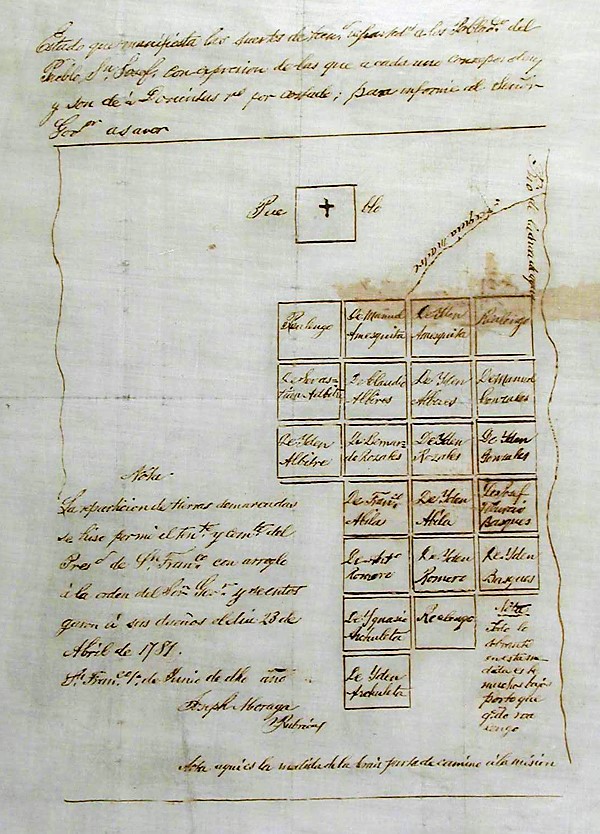 California was claimed as part of the
California was claimed as part of the  San Jose was officially founded as California's first civilian settlement on November 29, 1777, as the ''
San Jose was officially founded as California's first civilian settlement on November 29, 1777, as the ''Mexican period
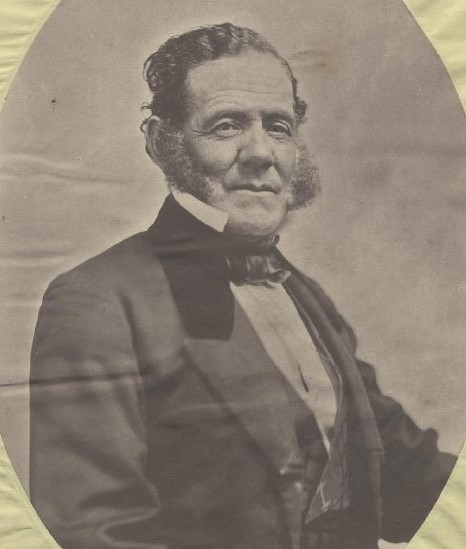 San Jose became part of the
San Jose became part of the American period
By the end of 1847, the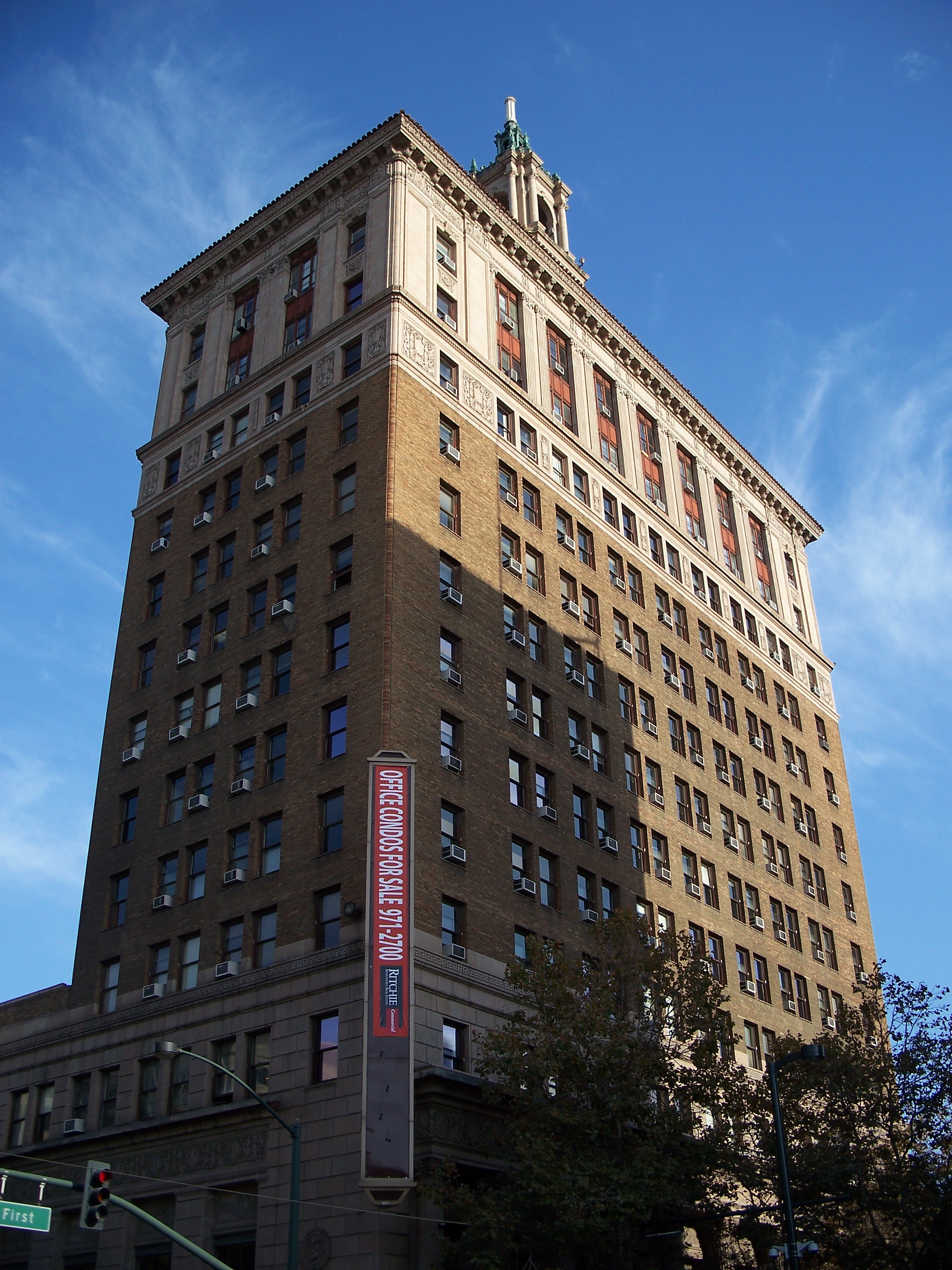 As World War II started, the city's economy shifted from agriculture (the Del Monte cannery was the largest employer and closed in 1999) to industrial manufacturing with the contracting of the
As World War II started, the city's economy shifted from agriculture (the Del Monte cannery was the largest employer and closed in 1999) to industrial manufacturing with the contracting of the 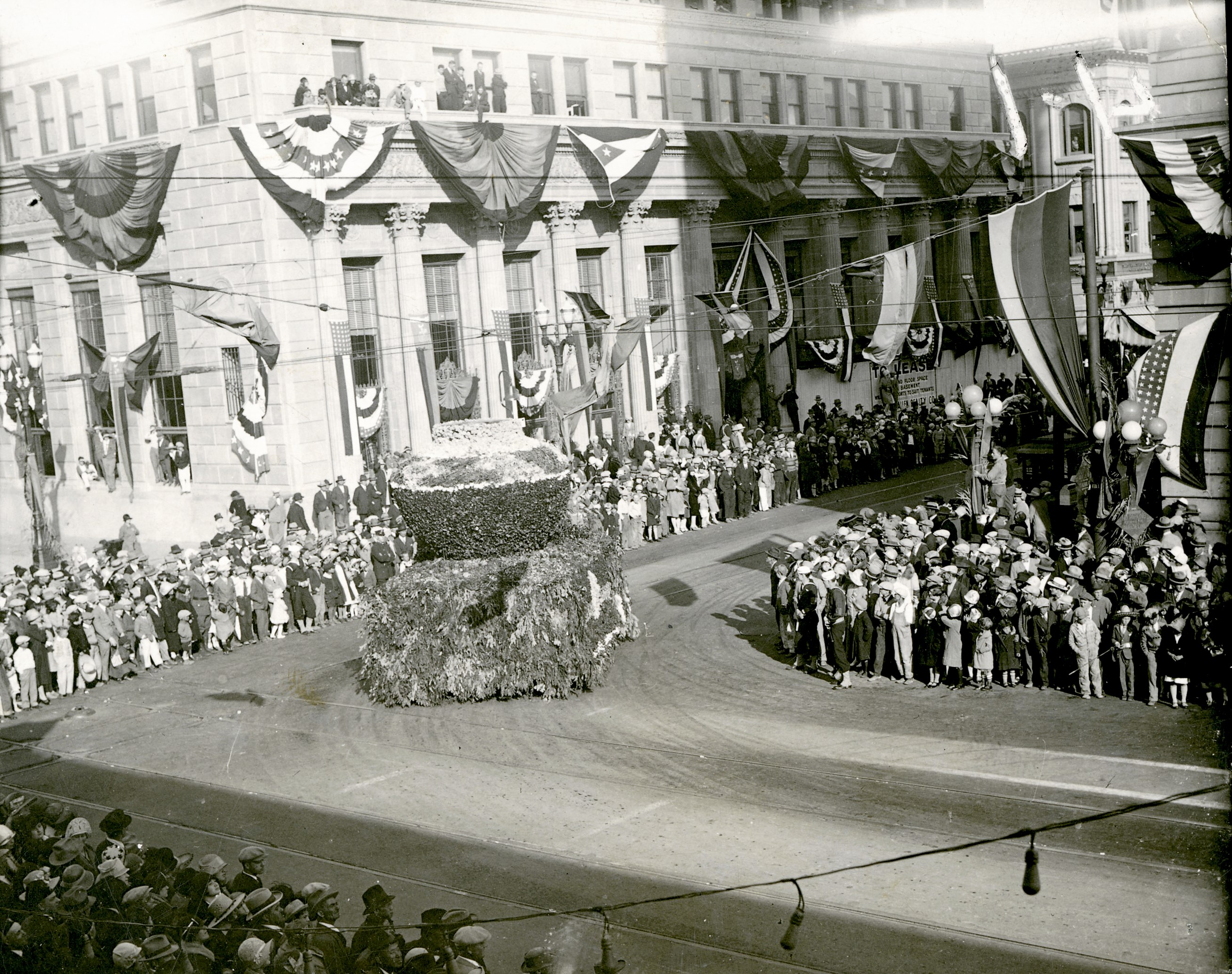 San Jose's position in
San Jose's position in Geography
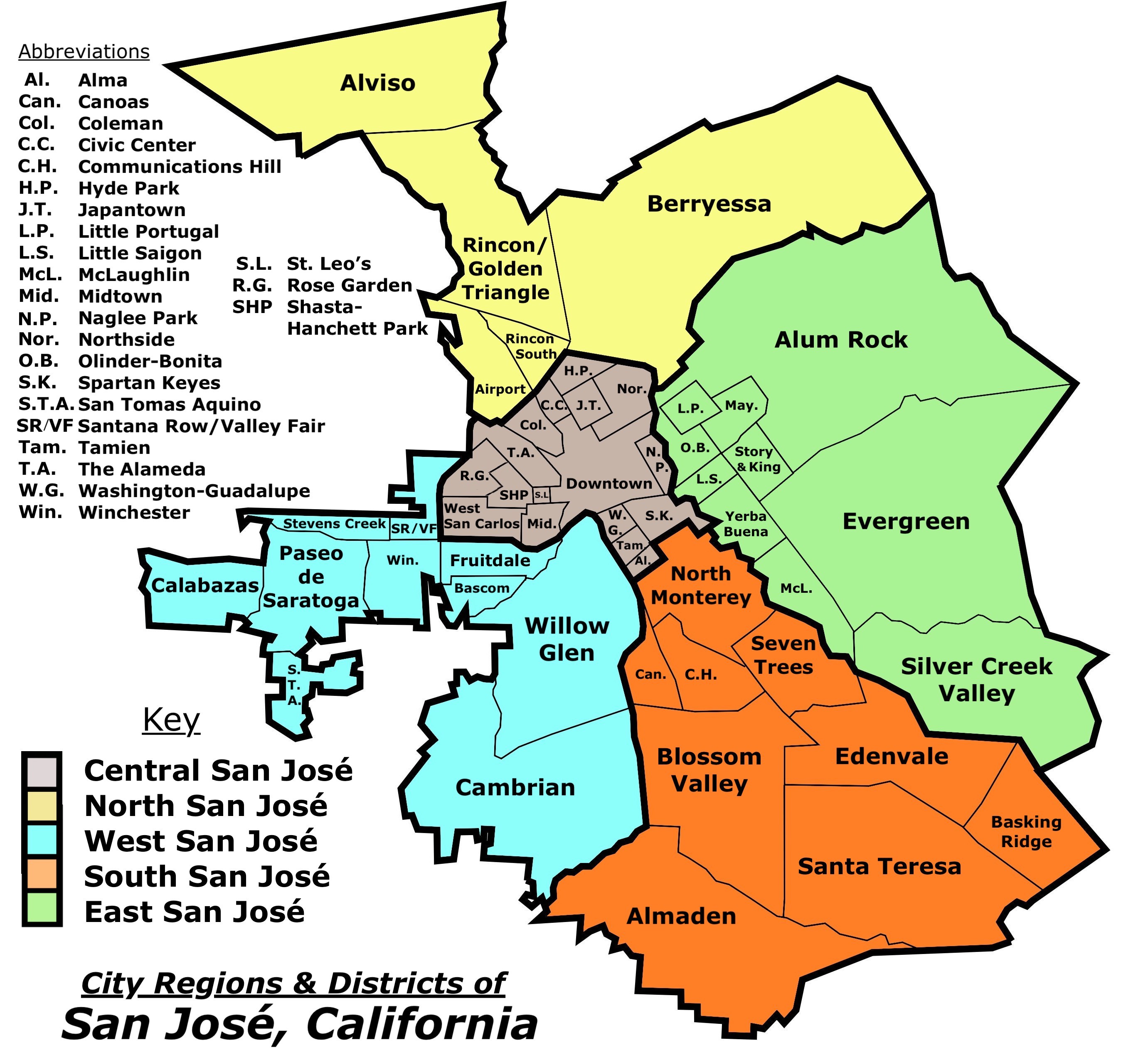 San Jose is located at . San Jose is located within the
San Jose is located at . San Jose is located within the Cityscape
San Jose's expansion was made by the design of "Dutch" Hamann, the City Manager from 1950 to 1969. During his administration, with his staff referred to as "Dutch's Panzer Division", the city annexed property 1,389 times, growing the city from , absorbing the communities named above, changing their status to "neighborhoods." Sales taxes were a chief source of revenue. Hamann would determine where major shopping areas would be, and then annex narrow bands of land along major roadways leading to those locations, pushing tentacles across the Santa Clara Valley and, in turn, walling off the expansion of adjacent communities. During his reign, it was said the City Council would vote according to Hamann's nod. In 1963, the State of California imposedTopography
 The Guadalupe River runs from the
The Guadalupe River runs from the Climate
San Jose, like most of the Bay Area, has a warm-summerNeighborhoods and districts
The city is generally divided into the following areas: Central San Jose (centered on Downtown San Jose), West San Jose, North San Jose, East San Jose, and South San Jose. Many of San Jose's districts and neighborhoods were previously unincorporated area, unincorporated communities or separate municipalities that were later annexed by the city. Besides those mentioned above, some well-known communities within San Jose includeParks

 San Jose possesses about of parkland in its city limits, including a part of the expansive Don Edwards San Francisco Bay National Wildlife Refuge. The city's oldest park is Alum Rock Park, established in 1872. In its 2013 ParkScore ranking, Trust for Public Land, The Trust for Public Land, a national land conservation organization, reported that San Jose was tied with Albuquerque, New Mexico, Albuquerque and Omaha, Nebraska, Omaha for having the 11th best park system among the 50 most populous U.S. cities.
* Almaden Quicksilver County Park, of former mercury mines in South San Jose (operated and maintained by the Santa Clara County Parks and Recreation Department).
* Alum Rock Park, in East San Jose, the oldest municipal park in California and one of the largest municipal parks in the United States.
* Children's Discovery Museum of San Jose, Children's Discovery Museum hosts an outdoor park-like setting, featuring the world's largest permanent Monopoly game, per the Guinness Book of World Records. Caretakers for this attraction include the 501(c)3 non-profit group Monopoly in the Park.
* Circle of Palms Plaza, a ring of palm trees surrounding a California state seal and historical landmark at the site of the first state capitol
* Emma Prusch Farm Park, in East San Jose. Donated by Emma Prusch to demonstrate the valley's agricultural past, it includes a 4-H barn (the largest in San Jose), community gardens, a rare-fruit orchard, demonstration gardens, picnic areas, and expanses of lawn.
* Field Sports Park, Santa Clara County's only publicly owned firing range, located in south San Jose
* Iris Chang Park, located in North San Jose is dedicated to the memory of Iris Chang, Iris Shun-Ru Chang, author of the Rape of Nanking and a San Jose resident.
* Kelley Park, including diverse facilities such as Happy Hollow Park & Zoo (a child-centric amusement park), the Japanese Friendship Garden (Kelley Park), History Park at Kelley Park, and the Portuguese Historical Museum within the history park
* Martial Cottle Park, a former agricultural farm, in South San Jose. Operated by Santa Clara County Parks and Recreation Department
* Oak Hill Memorial Park, California's oldest secular cemetery
* Overfelt Gardens, including the Chinese Cultural Garden
*
San Jose possesses about of parkland in its city limits, including a part of the expansive Don Edwards San Francisco Bay National Wildlife Refuge. The city's oldest park is Alum Rock Park, established in 1872. In its 2013 ParkScore ranking, Trust for Public Land, The Trust for Public Land, a national land conservation organization, reported that San Jose was tied with Albuquerque, New Mexico, Albuquerque and Omaha, Nebraska, Omaha for having the 11th best park system among the 50 most populous U.S. cities.
* Almaden Quicksilver County Park, of former mercury mines in South San Jose (operated and maintained by the Santa Clara County Parks and Recreation Department).
* Alum Rock Park, in East San Jose, the oldest municipal park in California and one of the largest municipal parks in the United States.
* Children's Discovery Museum of San Jose, Children's Discovery Museum hosts an outdoor park-like setting, featuring the world's largest permanent Monopoly game, per the Guinness Book of World Records. Caretakers for this attraction include the 501(c)3 non-profit group Monopoly in the Park.
* Circle of Palms Plaza, a ring of palm trees surrounding a California state seal and historical landmark at the site of the first state capitol
* Emma Prusch Farm Park, in East San Jose. Donated by Emma Prusch to demonstrate the valley's agricultural past, it includes a 4-H barn (the largest in San Jose), community gardens, a rare-fruit orchard, demonstration gardens, picnic areas, and expanses of lawn.
* Field Sports Park, Santa Clara County's only publicly owned firing range, located in south San Jose
* Iris Chang Park, located in North San Jose is dedicated to the memory of Iris Chang, Iris Shun-Ru Chang, author of the Rape of Nanking and a San Jose resident.
* Kelley Park, including diverse facilities such as Happy Hollow Park & Zoo (a child-centric amusement park), the Japanese Friendship Garden (Kelley Park), History Park at Kelley Park, and the Portuguese Historical Museum within the history park
* Martial Cottle Park, a former agricultural farm, in South San Jose. Operated by Santa Clara County Parks and Recreation Department
* Oak Hill Memorial Park, California's oldest secular cemetery
* Overfelt Gardens, including the Chinese Cultural Garden
* Trails
Wildlife
Early written documents record the local presence of migrating salmon in the Rio Guadalupe dating as far back as the 18th century. Both Rainbow trout, steelhead (''Oncorhynchus mykiss'') and Chinook salmon, King salmon are extant in the Guadalupe River, making San Jose the southernmost major U. S. city with known salmon spawning runs, the other cities being Anchorage, Alaska; Seattle, Washington; Portland, Oregon and Sacramento, California. Runs of up to 1,000 Chinook Salmon, Chinook or King Salmon (''Oncorhynchus tshawytscha'') swam up the Guadalupe River each fall in the 1990s, but have all but vanished in the current decade apparently blocked from access to breeding grounds by impassable culverts, weirs and wide, exposed and flat concrete paved channels installed by the Santa Clara Valley Water District. In 2011 a small number of Chinook salmon were filmed spawning under the Julian Street bridge. Conservationist Roger Castillo, who discovered the remains of a mammoth on the banks of the Guadalupe River in 2005, found that a herd of tule elk (''Cervus canadensis'') had recolonized the hills of south San Jose east of Highway 101 in early 2019. At the southern edge of San José, Coyote Valley, California, Coyote Valley is a corridor for wildlife migration between theDemographics
In 2014, the U.S. Census Bureau released its new population estimates. With a total population of 1,015,785, San Jose became the 11th U.S. city to hit the 1 million mark, even though it is currently the 10th most populous city. It is currently the largest U.S. city with an Asian plurality population.2010
The 2010 United States Census reported that San Jose had a population of 945,942. The population density was . The racial makeup of San Jose was 404,437 (42.8%) White (U.S. Census), White, 303,138 (32.0%) Asian (U.S. Census), Asian (10.4% Vietnamese American, Vietnamese, 6.7% Chinese American, Chinese, 5.6% Filipino American, Filipino, 4.6% Indian American, Indian, 1.2% Korean American, Korean, 1.2% Japanese American, Japanese, 0.3% Cambodian American, Cambodian, 0.2% Thai American, Thai, 0.2% Pakistani American, Pakistani, 0.2% Laotian American, Laotian), 30,242 (3.2%) African American (U.S. Census), African American, 8,297 (0.9%) Native American (U.S. Census), Native American, 4,017 (0.4%) Pacific Islander (U.S. Census), Pacific Islander, 148,749 (15.7%) from Race (United States Census), other races, and 47,062 (5.0%) from two or more races. There were 313,636 residents of Hispanic (U.S. Census), Hispanic or Latino (U.S. Census), Latino background (33.2%). 28.2% of the city's population was of Mexican American, Mexican descent; the next largest Hispanic groups were those of Salvadoran American, Salvadoran (0.7%) and Puerto Ricans, Puerto Rican (0.5%) heritage. Non-Hispanic Whites were 28.7% of the population in 2010, down from 75.7% in 1970. The census reported that 932,620 people (98.6% of the population) lived in households, 9,542 (1.0%) lived in non-institutionalized group quarters, and 3,780 (0.4%) were institutionalized. There were 301,366 households, out of which 122,958 (40.8%) had children under the age of 18 living in them, 162,819 (54.0%) were marriage, opposite-sex married couples living together, 37,988 (12.6%) had a female householder with no husband present, 18,702 (6.2%) had a male householder with no wife present. There were 16,900 (5.6%) POSSLQ, unmarried opposite-sex partnerships, and 2,458 (0.8%) same-sex partnerships, same-sex married couples or partnerships. 59,385 households (19.7%) were made up of individuals, and 18,305 (6.1%) had someone living alone who was 65 years of age or older. The average household size was 3.09. There were 219,509 family (U.S. Census), families (72.8% of all households); the average family size was 3.54. The age distribution of the city was as follows: 234,678 people (24.8%) were under the age of 18, 89,457 people (9.5%) aged 18 to 24, 294,399 people (31.1%) aged 25 to 44, 232,166 people (24.5%) aged 45 to 64, and 95,242 people (10.1%) who were 65 years of age or older. The median age was 35.2 years. For every 100 females, there were 101.1 males. For every 100 females age 18 and over, there were 99.8 males. There were 314,038 housing units at an average density of , of which 176,216 (58.5%) were owner-occupied, and 125,150 (41.5%) were occupied by renters. The homeowner vacancy rate was 1.6%; the rental vacancy rate was 4.3%. 553,436 people (58.5% of the population) lived in owner-occupied housing units and 379,184 people (40.1%) lived in rental housing units.2000
As of the census of 2000, there were 894,943 people, 276,598 households, and 203,576 families residing in the city. The population density was . There were 281,841 housing units at an average density of . Of the 276,598 households, 38.3% had children under the age of 18 living with them, 56.0% were married couples living together, 11.7% had a female householder with no husband present, and 26.4% were non-families. 18.4% of all households were made up of individuals, and 4.9% had someone living alone who was 65 years of age or older. The average household size was 3.20 and the average family size was 3.62. In the city, the age distribution of the population shows 26.4% under the age of 18, 9.9% from 18 to 24, 35.4% from 25 to 44, 20.0% from 45 to 64, and 8.3% who were 65 years of age or older. The median age was 33 years. For every 100 females, there were 103.3 males. For every 100 females age 18 and over, there were 102.5 males. According to a 2007 estimate, the median income for a household in the city was the highest in the U.S. for any city with more than a quarter-million residents with $76,963 annually. The median income for a family was $86,822. Males had a median income of $49,347 versus $36,936 for females. The per capita income for the city was $26,697. About 6.0% of families and 8.8% of the population were below the poverty line, including 10.3% of those under age 18 and 7.4% of those age 65 or over.Economy
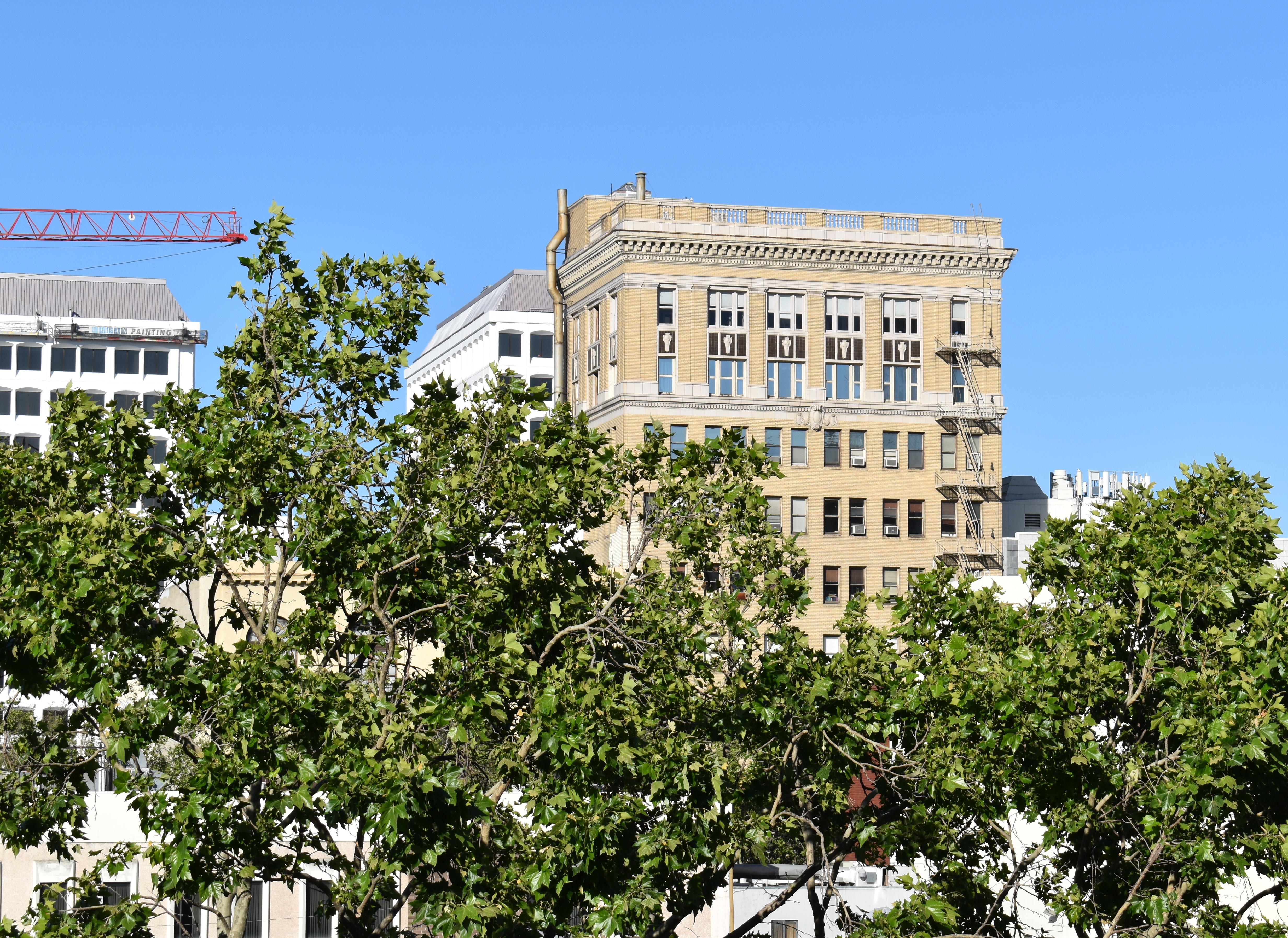 The San Jose–San Francisco–Oakland, CA Combined Statistical Area, CSA San Jose shares with San Francisco was the country's third-largest urban economy as of 2018, with a GDP of $1.03 trillion. Of the 500+ primary statistical areas in the U.S., this CSA had among the highest GDP per capita in 2018, at $106,757.
San Jose is a Foreign-trade zones of the United States, United States Foreign-Trade Zone. The city received its Foreign Trade Zone grant from the U.S. Federal Government in 1974, making it the 18th foreign-trade zone established in the United States. Under its grant, the City of San Jose is granted jurisdiction to oversee and administer foreign trade in Santa Clara County, Monterey County, San Benito County, Santa Cruz County, California, Santa Cruz County, and in the southern parts of San Mateo County, California, San Mateo County and Alameda County, California, Alameda County.
San Jose lists many companies with 1000 employees or more, including the headquarters of Adobe Systems, Adobe, Altera, Brocade Communications Systems, Cadence Design Systems,
The San Jose–San Francisco–Oakland, CA Combined Statistical Area, CSA San Jose shares with San Francisco was the country's third-largest urban economy as of 2018, with a GDP of $1.03 trillion. Of the 500+ primary statistical areas in the U.S., this CSA had among the highest GDP per capita in 2018, at $106,757.
San Jose is a Foreign-trade zones of the United States, United States Foreign-Trade Zone. The city received its Foreign Trade Zone grant from the U.S. Federal Government in 1974, making it the 18th foreign-trade zone established in the United States. Under its grant, the City of San Jose is granted jurisdiction to oversee and administer foreign trade in Santa Clara County, Monterey County, San Benito County, Santa Cruz County, California, Santa Cruz County, and in the southern parts of San Mateo County, California, San Mateo County and Alameda County, California, Alameda County.
San Jose lists many companies with 1000 employees or more, including the headquarters of Adobe Systems, Adobe, Altera, Brocade Communications Systems, Cadence Design Systems, Wealth
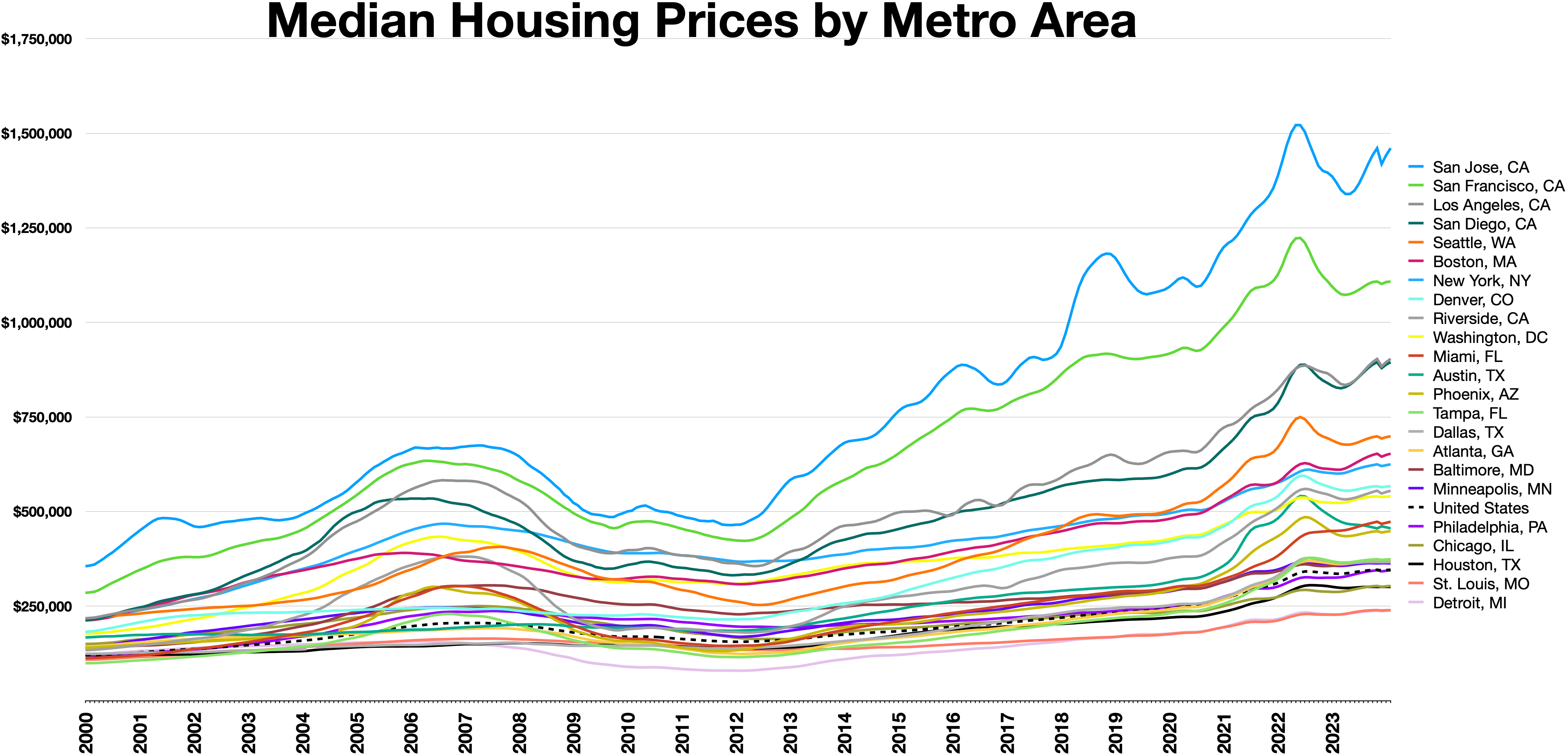 The San Jose Metropolitan Area has the most millionaires and billionaires in the United States per capita. It is situated in the most affluent county in
The San Jose Metropolitan Area has the most millionaires and billionaires in the United States per capita. It is situated in the most affluent county in Silicon Valley
 The large concentration of high-technology engineering, computer, and microprocessor companies around San Jose has led the area to be known as Silicon Valley. Area schools such as the University of California, Berkeley, University of California, Santa Cruz, San Jose State University, San Francisco State University, California State University, East Bay, Santa Clara University, and Stanford University pump thousands of engineering and computer science graduates into the local economy every year.
San Jose residents produce more U.S. patents than any other city. On October 15, 2015, the United States Patent and Trademark Office opened a satellite office in San Jose to serve Silicon Valley and the Western United States. Thirty-five percent of all venture capital funds in the U.S. are invested in San Jose and Silicon Valley companies. By April 2018, Google was in the process of planning the "biggest tech campus in Silicon Valley" in San Jose.
High economic growth during the Dot-com bubble, tech bubble caused employment, housing prices, and traffic congestion to peak in the late 1990s. As the economy slowed in the early 2000s, employment and traffic congestion was somewhat diminished. In the mid-2000s, traffic along major highways again began to worsen as the economy improved. San Jose had 405,000 jobs within its city limits in 2006, and an unemployment rate of 4.6%. San Jose has the highest median income of any U.S. city with over 280,000 people.
On March 14, 2013, San Jose implemented a public wireless connection in the downtown area. Wireless access points have been placed on outdoor light posts throughout the city.
The large concentration of high-technology engineering, computer, and microprocessor companies around San Jose has led the area to be known as Silicon Valley. Area schools such as the University of California, Berkeley, University of California, Santa Cruz, San Jose State University, San Francisco State University, California State University, East Bay, Santa Clara University, and Stanford University pump thousands of engineering and computer science graduates into the local economy every year.
San Jose residents produce more U.S. patents than any other city. On October 15, 2015, the United States Patent and Trademark Office opened a satellite office in San Jose to serve Silicon Valley and the Western United States. Thirty-five percent of all venture capital funds in the U.S. are invested in San Jose and Silicon Valley companies. By April 2018, Google was in the process of planning the "biggest tech campus in Silicon Valley" in San Jose.
High economic growth during the Dot-com bubble, tech bubble caused employment, housing prices, and traffic congestion to peak in the late 1990s. As the economy slowed in the early 2000s, employment and traffic congestion was somewhat diminished. In the mid-2000s, traffic along major highways again began to worsen as the economy improved. San Jose had 405,000 jobs within its city limits in 2006, and an unemployment rate of 4.6%. San Jose has the highest median income of any U.S. city with over 280,000 people.
On March 14, 2013, San Jose implemented a public wireless connection in the downtown area. Wireless access points have been placed on outdoor light posts throughout the city.
Media
San Jose is served by Greater Bay Area media. Print media outlets in San Jose include ''The Mercury News'', the weekly ''Metro Silicon Valley'', ''El Observador'' and the ''Silicon Valley / San Jose Business Journal''. The Bay Area's NBC Owned-and-operated station, O&O, KNTV 11, is licensed to San Jose. In total, broadcasters in the Bay Area include 34 television stations, 25 AM radio stations, and 55 FM radio stations. In April 1909, Charles David Herrold, an electronics instructor in San Jose, constructed a radio station to broadcast the human voice. The station, "San Jose Calling" (call letters FN, later FQW), was the world's first radio station with scheduled programming targeted at a general audience. The station became the first to broadcast music in 1910. Herrold's wife Sybil became the first female "disk jockey" in 1912. The station changed hands a number of times before eventually becoming today's KCBS (AM), KCBS in San Francisco. Therefore, KCBS technically is the oldest radio station in the United States, and celebrated its 100th anniversary in 2009 with much fanfare.Top employers
As of June 30, 2021, the top employers in the city were:Culture
Architecture
 Because the downtown area is in the flight path to nearby Mineta San Jose International Airport (also evidenced in the above panoramic), there is a height limit for buildings in the downtown area, which is underneath the final approach corridor to the airport. The height limit is dictated by local ordinances, driven by the distance from the runway and a slope defined by Federal Aviation Administration regulations. Core downtown buildings are limited to approximately but can get taller farther from the airport.
There has been broad criticism over the past few decades of the city's architecture. Citizens have complained that San Jose is lacking in aesthetically pleasing architectural styles. Blame for this lack of architectural "beauty" can be assigned to the re-development of the downtown area from the 1950s onward, in which whole blocks of historic commercial and residential structures were demolished. Exceptions to this include the Downtown Historic District (San Jose, California), Downtown Historic District, the Hotel De Anza, and the Hotel Sainte Claire, both of which are listed in the National Register of Historic Places for their architectural and historical significance.
Because the downtown area is in the flight path to nearby Mineta San Jose International Airport (also evidenced in the above panoramic), there is a height limit for buildings in the downtown area, which is underneath the final approach corridor to the airport. The height limit is dictated by local ordinances, driven by the distance from the runway and a slope defined by Federal Aviation Administration regulations. Core downtown buildings are limited to approximately but can get taller farther from the airport.
There has been broad criticism over the past few decades of the city's architecture. Citizens have complained that San Jose is lacking in aesthetically pleasing architectural styles. Blame for this lack of architectural "beauty" can be assigned to the re-development of the downtown area from the 1950s onward, in which whole blocks of historic commercial and residential structures were demolished. Exceptions to this include the Downtown Historic District (San Jose, California), Downtown Historic District, the Hotel De Anza, and the Hotel Sainte Claire, both of which are listed in the National Register of Historic Places for their architectural and historical significance.
 Municipal building projects have experimented more with architectural styles than have most private enterprises. The Children's Discovery Museum, Tech Museum of Innovation, and the San Jose Repertory Theater building have experimented with bold colors and unusual exteriors. The new San Jose City Hall, City Hall, designed by Richard Meier & Partners, opened in 2005 and is a notable addition to the growing collection of municipal building projects.
San Jose has many examples of houses with fine architecture. Late 19th century and early 20th century styles exist in neighborhoods such as Shasta/Hanchett Park, San Jose, California, Hanchett Park, Naglee Park, San Jose, California, Naglee Park, Rose Garden, San Jose, California, Rose Garden, and Willow Glen, California, Willow Glen (including Palm Haven).
Styles include Mediterranean Revival architecture, Spanish Colonial architecture, Neoclassical architecture, American Craftsman, Craftsman, Mission Revival, Prairie style, and Queen Anne style architecture in the United States, Queen Anne style Victorian.
Notable architects include Frank Delos Wolfe, Theodore Lenzen, Charles McKenzie, and Julia Morgan.
Municipal building projects have experimented more with architectural styles than have most private enterprises. The Children's Discovery Museum, Tech Museum of Innovation, and the San Jose Repertory Theater building have experimented with bold colors and unusual exteriors. The new San Jose City Hall, City Hall, designed by Richard Meier & Partners, opened in 2005 and is a notable addition to the growing collection of municipal building projects.
San Jose has many examples of houses with fine architecture. Late 19th century and early 20th century styles exist in neighborhoods such as Shasta/Hanchett Park, San Jose, California, Hanchett Park, Naglee Park, San Jose, California, Naglee Park, Rose Garden, San Jose, California, Rose Garden, and Willow Glen, California, Willow Glen (including Palm Haven).
Styles include Mediterranean Revival architecture, Spanish Colonial architecture, Neoclassical architecture, American Craftsman, Craftsman, Mission Revival, Prairie style, and Queen Anne style architecture in the United States, Queen Anne style Victorian.
Notable architects include Frank Delos Wolfe, Theodore Lenzen, Charles McKenzie, and Julia Morgan.
Visual arts
 Public art is an evolving attraction in the city. The city was one of the first to adopt a public art ordinance at 2% of capital improvement building project budgets, and as a result of this commitment, a considerable number of public art projects exist in the downtown area, and a growing collection in neighborhoods including libraries, parks, and fire stations. In particular, the Mineta Airport expansion incorporated art and technology into its development.
Early public art included a statue of Quetzalcoatl (the plumed serpent) downtown, controversial in its planning because some called it pagan, and controversial in its implementation because many felt that the final statue by Robert Graham (sculptor), Robert Graham did not look like a winged serpent, and was more noted for its expense than its aesthetics. Locals joked that the statue resembles a pile of feces.
A statue of
Public art is an evolving attraction in the city. The city was one of the first to adopt a public art ordinance at 2% of capital improvement building project budgets, and as a result of this commitment, a considerable number of public art projects exist in the downtown area, and a growing collection in neighborhoods including libraries, parks, and fire stations. In particular, the Mineta Airport expansion incorporated art and technology into its development.
Early public art included a statue of Quetzalcoatl (the plumed serpent) downtown, controversial in its planning because some called it pagan, and controversial in its implementation because many felt that the final statue by Robert Graham (sculptor), Robert Graham did not look like a winged serpent, and was more noted for its expense than its aesthetics. Locals joked that the statue resembles a pile of feces.
A statue of  In 2001, the city-sponsored SharkByte, an exhibit of decorated sharks based on the mascot of the hockey team, the San Jose Sharks, and modeled after Chicago's display of decorated cows. Large models of sharks decorated in clever, colorful, or creative ways by local artists were displayed for months at dozens of locations around the city. After the exhibition, the sharks were auctioned off for charity.
In 2006, Adobe Systems commissioned an art installation titled ''San Jose Semaphore'' by Ben Rubin, at the top of its headquarters building. Semaphore is composed of four LED discs which "rotate" to transmit a message. The content remained a mystery until it was deciphered in August 2007. The visual art installation is supplemented with an audio track, transmitted from the building on a low-power AM station. The audio track provides clues to decode the message being transmitted.
San Jose retains a number of murals in the Chicano history tradition of Diego Rivera and José Clemente Orozco of murals as public textbooks.
Although intended to be permanent monuments to the city's heritage as a mission town founded in 1777, a number of murals have been painted over, notably ''Mural de la Raza'', on the side of a Story Rd shoe store, and ''Mexicatlan'' at the corner of Sunset and Alum Rock. In addition, two of three murals by Mexican artist Gustavo Bernal Navarro have disappeared. The third mural, ''La Medicina y la Comunidad'' at the Gardner clinic on East Virginia Street, depicts both modern and traditional healers.
Surviving Chicano history murals include ''Nuestra Senora de Guadelupe'' at Our Lady of Guadalupe church and the 1970s or 1980s ''Virgen de Guadelupe Huelga Bird'' at Cal Foods east of downtown. The Guadalajara restaurant has the 1986 ''Guadalajara Market No. 2'' by Edward Earl Tarver III and a 2013 work by Jesus Rodriguez and Empire 7, ''La Gran Culture Resonance''.
An unknown artist painted the ''Huelga Bird and Aztec City'' mural in the 1970s or 1980s on the Clyde L. Fisher Middle School. In 1995 Antonio Nava Torres painted ''The Aztec Calendar Handball Court'' at Biebrach Park, and the unknown artist of ''Chaco's Pachuco'' painted it on the former Chaco's Restaurant in the 1990s. The ''Jerry Hernandez'' mural by Frank Torres at Pop's Mini Mart on King Road dates to 2009, and another recent mural by Carlos Rodriguez on the Sidhu Market at Locust and West Virginia depicts a stern-looking warrior.
In 2001, the city-sponsored SharkByte, an exhibit of decorated sharks based on the mascot of the hockey team, the San Jose Sharks, and modeled after Chicago's display of decorated cows. Large models of sharks decorated in clever, colorful, or creative ways by local artists were displayed for months at dozens of locations around the city. After the exhibition, the sharks were auctioned off for charity.
In 2006, Adobe Systems commissioned an art installation titled ''San Jose Semaphore'' by Ben Rubin, at the top of its headquarters building. Semaphore is composed of four LED discs which "rotate" to transmit a message. The content remained a mystery until it was deciphered in August 2007. The visual art installation is supplemented with an audio track, transmitted from the building on a low-power AM station. The audio track provides clues to decode the message being transmitted.
San Jose retains a number of murals in the Chicano history tradition of Diego Rivera and José Clemente Orozco of murals as public textbooks.
Although intended to be permanent monuments to the city's heritage as a mission town founded in 1777, a number of murals have been painted over, notably ''Mural de la Raza'', on the side of a Story Rd shoe store, and ''Mexicatlan'' at the corner of Sunset and Alum Rock. In addition, two of three murals by Mexican artist Gustavo Bernal Navarro have disappeared. The third mural, ''La Medicina y la Comunidad'' at the Gardner clinic on East Virginia Street, depicts both modern and traditional healers.
Surviving Chicano history murals include ''Nuestra Senora de Guadelupe'' at Our Lady of Guadalupe church and the 1970s or 1980s ''Virgen de Guadelupe Huelga Bird'' at Cal Foods east of downtown. The Guadalajara restaurant has the 1986 ''Guadalajara Market No. 2'' by Edward Earl Tarver III and a 2013 work by Jesus Rodriguez and Empire 7, ''La Gran Culture Resonance''.
An unknown artist painted the ''Huelga Bird and Aztec City'' mural in the 1970s or 1980s on the Clyde L. Fisher Middle School. In 1995 Antonio Nava Torres painted ''The Aztec Calendar Handball Court'' at Biebrach Park, and the unknown artist of ''Chaco's Pachuco'' painted it on the former Chaco's Restaurant in the 1990s. The ''Jerry Hernandez'' mural by Frank Torres at Pop's Mini Mart on King Road dates to 2009, and another recent mural by Carlos Rodriguez on the Sidhu Market at Locust and West Virginia depicts a stern-looking warrior.
Performing arts
The city is home to many performing arts companies, including Opera San Jose, Symphony Silicon Valley, Ballet San Jose Silicon Valley, sjDANCEco, The San Jose Symphonic Choir, Children's Musical Theater of San Jose, the San Jose Youth Symphony, the San Jose Repertory Theatre, City Lights Theatre Company, The Tabard Theatre Company, San Jose Stage Company, and the now-defunct American Musical Theatre of San Jose which was replaced by Broadway San Jose in partnership with Team San Jose. San Jose is also home to the San Jose Museum of Art, one of the nation's premiere Modern Art museums. The SAP Center at San Jose is one of the most active venues for events in the world. According to Billboard Magazine and Pollstar, the arena sold the most tickets to non-sporting events of any venue in the United States, and third in the world after the Manchester Evening News Arena in Manchester, England, and the Bell Centre in Montreal, Canada, for the period from January 1September 30, 2004. The annual Cinequest Film Festival in downtown has grown to over 60,000 attendees per year, becoming an important festival for independent films. The San Francisco Asian American Film Festival is an annual event, which is hosted in San Francisco, Berkeley, California, Berkeley, and Downtown San Jose. Approximately 30 to 40 films are screened in San Jose each year at the Camera 12 Downtown Cinemas. The San Jose Jazz Festival is another of many events hosted throughout the year. The Ira F. Brilliant Center for Beethoven Studies houses the largest collection of Ludwig van Beethoven in the world, outside of Europe, and is the only institution of its kind in North America.Sports
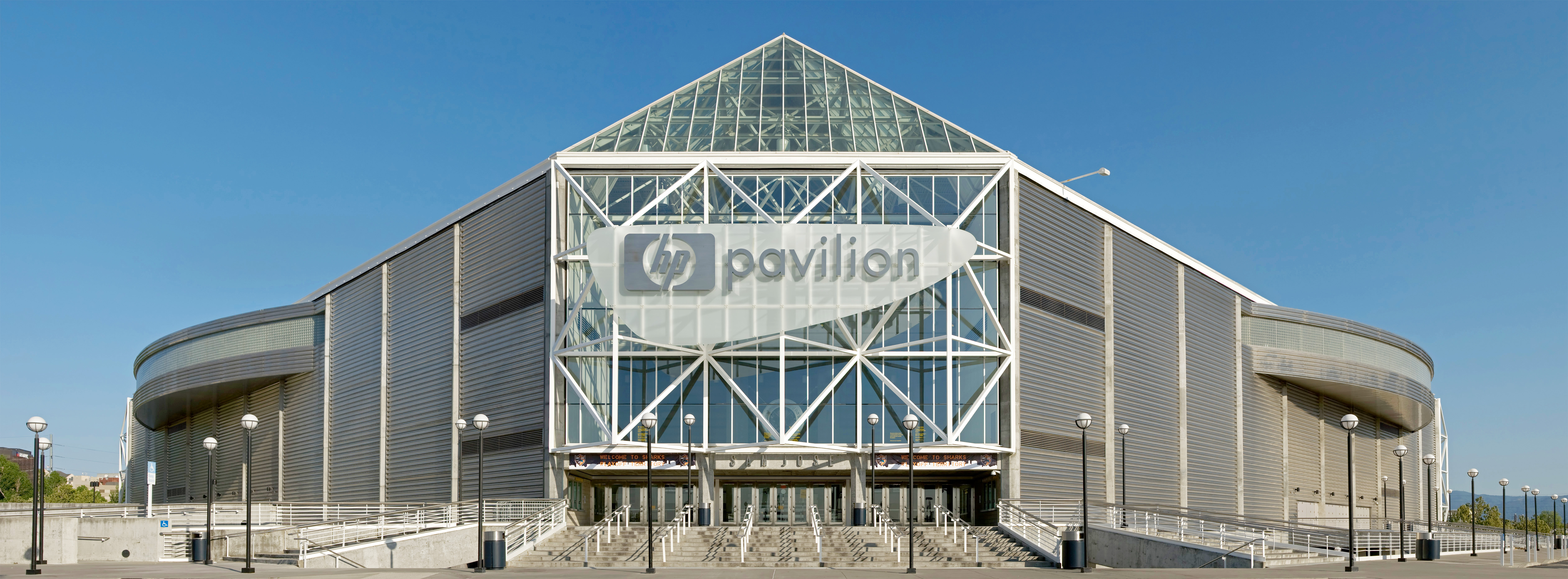
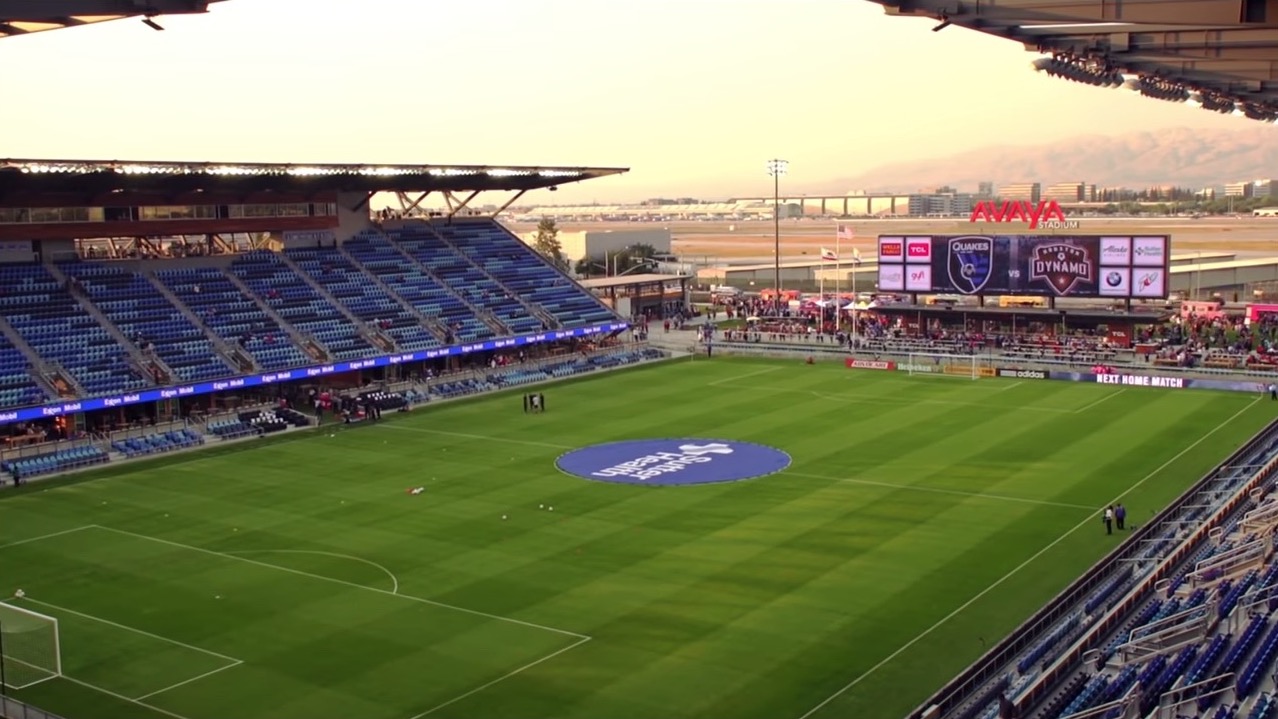 San Jose is home to the San Jose Sharks of the NHL, the San Jose Barracuda of the AHL, and the San Jose Earthquakes of Major League Soccer. The Sharks and the Barracuda play in the SAP Center at San Jose. The Earthquakes built an 18,000 seat PayPal Park, new stadium that opened in March 2015. San Jose was a founding member of both the California League and Pacific Coast League in minor league baseball. San Jose currently fields the San Jose Giants, a Low-A affiliate of the San Francisco Giants.
San Jose has "aggressively wooed" the Oakland Athletics to relocate to San Jose from nearby Oakland, and the Athletics in turn have said that San Jose is their "best option", but the San Francisco Giants have thus far exercised a veto against this proposal. In 2013, the city of San Jose sued Major League Baseball for not allowing the Athletics to relocate to San Jose. On October 5, 2015, the United States Supreme Court rejected San Jose's bid on the Athletics.
From 2005 to 2007, the San Jose Grand Prix, an annual street circuit race in the Champ Car World Series, was held in the downtown area. Other races included the Trans-Am Series, the Toyota Atlantic Championship, the United States Touring Car Championship, the Historic Stock Car Racing Series, and the Formula D Drifting (motorsport), Drift racing competition.
San Jose has been host to several United States Olympic Committee, U.S. Olympic team trials over the years. In 2004, the San Jose Sports Authority held the trials for judo, taekwondo, trampolining and rhythmic gymnastics at the San Jose State Event Center. SAP Center hosted the Gymnastic trials in 2012 and 2016 (women's only). and the U.S. Figure Skating Championships (used in Olympic years to select the Olympians) in 1996, 2012, and 2018. It was due to host the 2021 Championship, but that was moved to Las Vegas and it will instead host 2023. In 2008, around 90 percent of the members of the United States Olympic team were processed at San Jose State University prior to traveling to the 2008 Summer Olympics in Beijing. The 2009 Junior Olympics for trampoline were also held here.
In August 2004, the San Jose Seahawk Rugby Football Club hosted the USA All-Star Rugby Sevens Championships at Watson Bowl, east of Downtown.
San Jose State hosted the 2011 American Collegiate Hockey Association (ACHA) national tournament. The 2013 NCAA Division I men's basketball tournament, NCAA Division I men's basketball tournament is also frequently held in San Jose.
San Jose is home to the San Jose Sharks of the NHL, the San Jose Barracuda of the AHL, and the San Jose Earthquakes of Major League Soccer. The Sharks and the Barracuda play in the SAP Center at San Jose. The Earthquakes built an 18,000 seat PayPal Park, new stadium that opened in March 2015. San Jose was a founding member of both the California League and Pacific Coast League in minor league baseball. San Jose currently fields the San Jose Giants, a Low-A affiliate of the San Francisco Giants.
San Jose has "aggressively wooed" the Oakland Athletics to relocate to San Jose from nearby Oakland, and the Athletics in turn have said that San Jose is their "best option", but the San Francisco Giants have thus far exercised a veto against this proposal. In 2013, the city of San Jose sued Major League Baseball for not allowing the Athletics to relocate to San Jose. On October 5, 2015, the United States Supreme Court rejected San Jose's bid on the Athletics.
From 2005 to 2007, the San Jose Grand Prix, an annual street circuit race in the Champ Car World Series, was held in the downtown area. Other races included the Trans-Am Series, the Toyota Atlantic Championship, the United States Touring Car Championship, the Historic Stock Car Racing Series, and the Formula D Drifting (motorsport), Drift racing competition.
San Jose has been host to several United States Olympic Committee, U.S. Olympic team trials over the years. In 2004, the San Jose Sports Authority held the trials for judo, taekwondo, trampolining and rhythmic gymnastics at the San Jose State Event Center. SAP Center hosted the Gymnastic trials in 2012 and 2016 (women's only). and the U.S. Figure Skating Championships (used in Olympic years to select the Olympians) in 1996, 2012, and 2018. It was due to host the 2021 Championship, but that was moved to Las Vegas and it will instead host 2023. In 2008, around 90 percent of the members of the United States Olympic team were processed at San Jose State University prior to traveling to the 2008 Summer Olympics in Beijing. The 2009 Junior Olympics for trampoline were also held here.
In August 2004, the San Jose Seahawk Rugby Football Club hosted the USA All-Star Rugby Sevens Championships at Watson Bowl, east of Downtown.
San Jose State hosted the 2011 American Collegiate Hockey Association (ACHA) national tournament. The 2013 NCAA Division I men's basketball tournament, NCAA Division I men's basketball tournament is also frequently held in San Jose.
Landmarks
Notable landmarks in San Jose include Children's Discovery Museum of San Jose, History Park at Kelley Park, Cathedral Basilica of St. Joseph (San Jose), Cathedral Basilica of St. Joseph,Museums and institutions
* The Tech Museum of Innovation * Ira F. Brilliant Center for Beethoven Studies, which houses the largest collection of Ludwig van Beethoven in the world outside of Europe * Dr. Martin Luther King, Jr. Library, the largest U.S. public library west of the Mississippi River * San Jose Museum of Art, contemporary art museum with a collection of West Coast artists * Children's Discovery Museum of San Jose * History Park at Kelley Park * Mexican Heritage Plaza, a Chicano museum and cultural centerMovimiento de Arte y Cultura Latino Americana
is an inclusive contemporary arts museum grounded in the Chicano/Latino experience * Portuguese Historical Museum * Rosicrucian Egyptian Museum, the largest collection of Egyptian artifacts on display in the western United States, located at Rosicrucian Park * East San Jose Carnegie Branch Library, San Jose East Carnegie Branch Library is notable as it is the last Carnegie library still operating in San Jose, and is on the National Register of Historic Places. * San Jose Steam Railroad Museum, proposed, artifacts and rolling stock are kept at the fairgrounds and Kelley Park * History San José * Japanese American Museum of San Jose, a museum of Japanese-American history * Bank of America Building (San Jose, California), Old Bank of America Building a historic landmark * San Jose Museum of Quilts & Textiles, the first museum in America dedicated solely to quilts and textiles as an art form * Viet Museum, a museum of Vietnamese-American history
Law and government
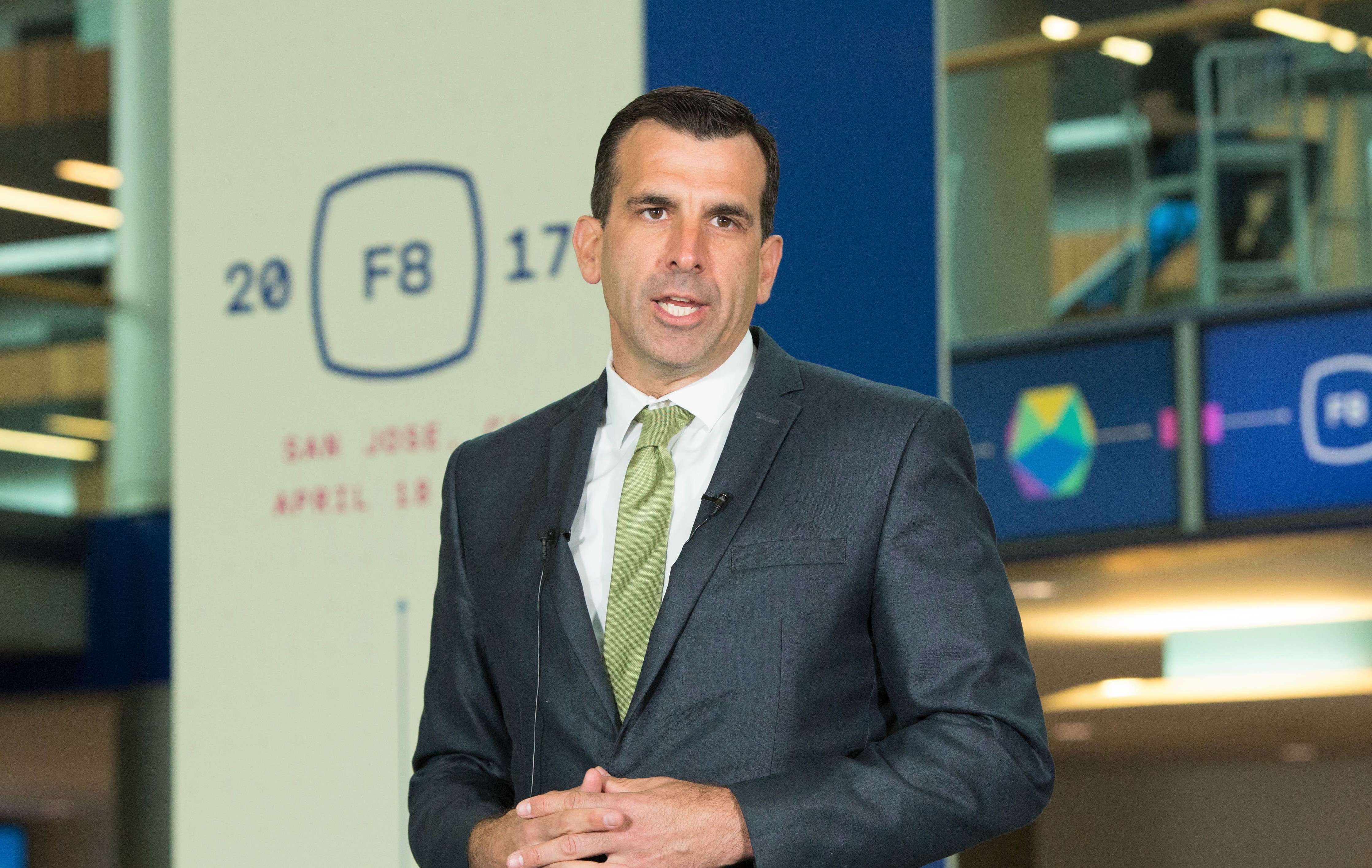
Local
San Jose is a charter city under California law, giving it the power to enact local ordinances that may conflict with state law, within the limits provided by the charter. The city has a council-manager government with a city manager nominated by the mayor and elected by the city council. TheState and federal
In the California State Senate, San Jose is split between the California's 10th State Senate district, 10th, California's 15th State Senate district, 15th, and California's 17th State Senate district, 17th districts, represented by , , and respectively. In the California State Assembly, San Jose is split between the California's 25th State Assembly district, 25th, California's 27th State Assembly district, 27th, California's 28th State Assembly district, 28th, and California's 29th State Assembly district, 29th districts, represented by , , , and , respectively. Federally, San Jose is split between California's California's 17th congressional district, 17th, California's 18th congressional district, 18th, and California's 19th congressional district, 19th congressional districts, represented by , , and , respectively. Several state and federal agencies maintain offices in San Jose. The city is the location of the Sixth District of the California Courts of Appeal. It is also home to one of three courthouses of the United States District Court for the Northern District of California, the other two being in Oakland and San Francisco.Crime
The San Jose Police Department has consistently innovated in crime prevention, through programs like "CrimeReports.com", which made San Jose the first American city to make all 911 calls available online. Like most large cities, crime levels had fallen significantly after rising in the 1980s. From 2002 to 2006, Morgan Quitno Press named San Jose the safest city in the United States with a population over 500,000 people. Crime in San Jose had been lower than in other large American cities until 2013, when crime rates in San Jose climbed above California and U.S. averages. In 2021, SmartAsset ranked San Jose tied as the 10th safest city in the United States. In 2020, violent crime per 100,000 people has been the lowest the city has seen in 2017 while the homicide rate has been the highest since 2016; property crime per 100,000 people has been the lowest the city has seen in over ten years.2021 mass shooting
On May 26, 2021, a mass shooting occurred at a Santa Clara Valley Transportation Authority (VTA) rail yard in San Jose. Ten people were killed, including the gunman, 57-year-old VTA employee Samuel James Cassidy, who shot and killed himself. The shooting led to a day-long suspension of light rail services in the area. It is the deadliest mass shooting in the history of theEducation
Higher education
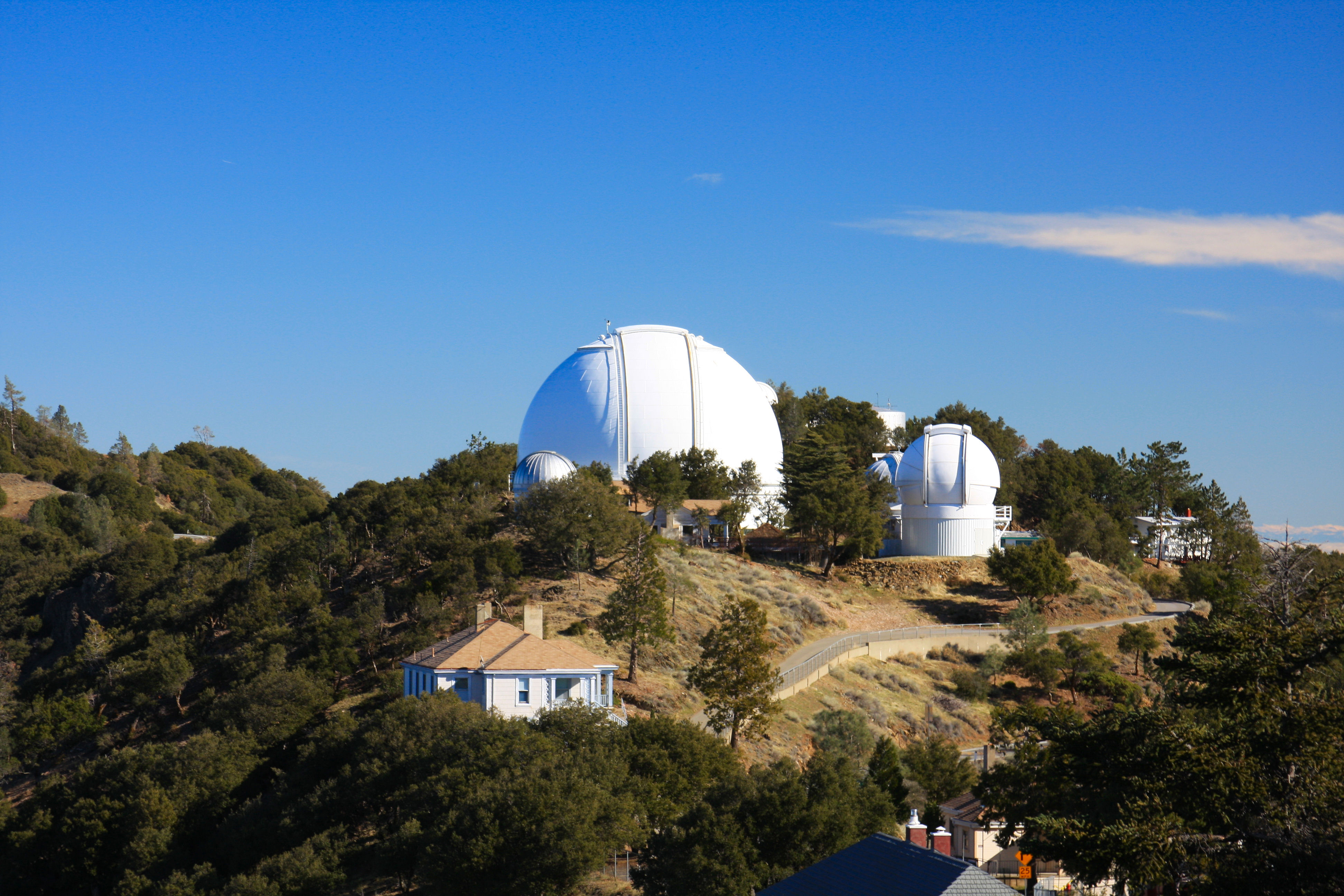 San Jose is home to several colleges and university, universities. The largest is San Jose State University, which was founded by the California legislature in 1862 as the California State Normal School, and is the founding campus of the California State University (CSU) system. Located in downtown San Jose since 1870, the university enrolls approximately 30,000 students in over 130 different bachelor's and master's degree programs. The school enjoys a good academic reputation, especially in the fields of engineering, business, computer science, art and design, and journalism, and consistently ranks among the top public universities in the western region of the United States. San Jose State is one of only three Bay Area schools that fields a Football Bowl Subdivision (FBS) NCAA Division I, Division I college football team; Stanford University and U.C. Berkeley are the other two.
California University of Management and Technology (CALMAT) offers many degree programs, including MBA, Computer Science, Information Technology. Most classes are offered both online and in the downtown campus. Many of the students are working professionals in the Silicon Valley.
The University of Silicon Valley is located in the Rincon, San Jose, Golden Triangle of North San Jose.
Lincoln Law School of San Jose and University of Silicon Valley Law School offer law degrees, catering to working professionals.
National University (California), National University maintains a campus in San Jose.
The San Jose campus of Golden Gate University offers business bachelor and Master of Business Administration, MBA degrees.
In the San Jose metropolitan area, Stanford University is in Stanford, California, Santa Clara University is in Santa Clara, California, and U.C. Santa Cruz is in Santa Cruz, California. Within the
San Jose is home to several colleges and university, universities. The largest is San Jose State University, which was founded by the California legislature in 1862 as the California State Normal School, and is the founding campus of the California State University (CSU) system. Located in downtown San Jose since 1870, the university enrolls approximately 30,000 students in over 130 different bachelor's and master's degree programs. The school enjoys a good academic reputation, especially in the fields of engineering, business, computer science, art and design, and journalism, and consistently ranks among the top public universities in the western region of the United States. San Jose State is one of only three Bay Area schools that fields a Football Bowl Subdivision (FBS) NCAA Division I, Division I college football team; Stanford University and U.C. Berkeley are the other two.
California University of Management and Technology (CALMAT) offers many degree programs, including MBA, Computer Science, Information Technology. Most classes are offered both online and in the downtown campus. Many of the students are working professionals in the Silicon Valley.
The University of Silicon Valley is located in the Rincon, San Jose, Golden Triangle of North San Jose.
Lincoln Law School of San Jose and University of Silicon Valley Law School offer law degrees, catering to working professionals.
National University (California), National University maintains a campus in San Jose.
The San Jose campus of Golden Gate University offers business bachelor and Master of Business Administration, MBA degrees.
In the San Jose metropolitan area, Stanford University is in Stanford, California, Santa Clara University is in Santa Clara, California, and U.C. Santa Cruz is in Santa Cruz, California. Within the Primary and secondary education
Up until the opening of Abraham Lincoln High School (San Jose, California), Lincoln High School in 1943, San Jose students only attended San Jose High Academy, San Jose High School. San Jose has 127 elementary, 47 middle, and 44 public high schools. Public education in the city is provided by four high school districts, fourteen elementary education, elementary districts, and four unified school districts (which provide both elementary and high schools). In addition to the main San Jose Unified School District (SJUSD) and other Districts within San Jose such as the Alum Rock Unified School District and the East Side Union High School District, other nearby unified school districts of nearby cities are Milpitas Unified School District, Morgan Hill Unified School District, and Santa Clara Unified School District. The public schools in San Jose declared bankruptcy in 1983; this was the largest school district bankruptcy to that date in the US. Observers identified the reasons as a drop of 5,000 students in the preceding years, the difficulties imposed on school finances by ''Serrano v. Priest'' in 1968, the reduction of tax monies because of 1978 California Proposition 13, and the local teacher's union contract requiring a raise in pay. Private schools in San Jose are primarily run by religious groups. The Roman Catholic Diocese of San Jose in California, Catholic Diocese of San Jose has the second largest student population in the Santa Clara County, behind only SJUSD; the diocese and its parishes operate several schools in the city, including five high schools: Archbishop Mitty High School, Bellarmine College Preparatory, Notre Dame High School, San Jose, California, Notre Dame High School, Saint Francis High School (Mountain View), Saint Francis High School, and Presentation High School. Other private high schools include two Baptist high schools, Liberty Baptist School and Private schools in San Jose, California, White Road Baptist Academy, one Non-denominational Christianity, Non-Denominational Protestant high school, Valley Christian High School (San Jose, California), one University-preparatory school, Cambrian Academy, a nonsectarian K-12 The Harker School, Harker School with four campuses in western San Jose, and a K-12 school of the Wisconsin Evangelical Lutheran Synod, Apostles Lutheran School.Libraries
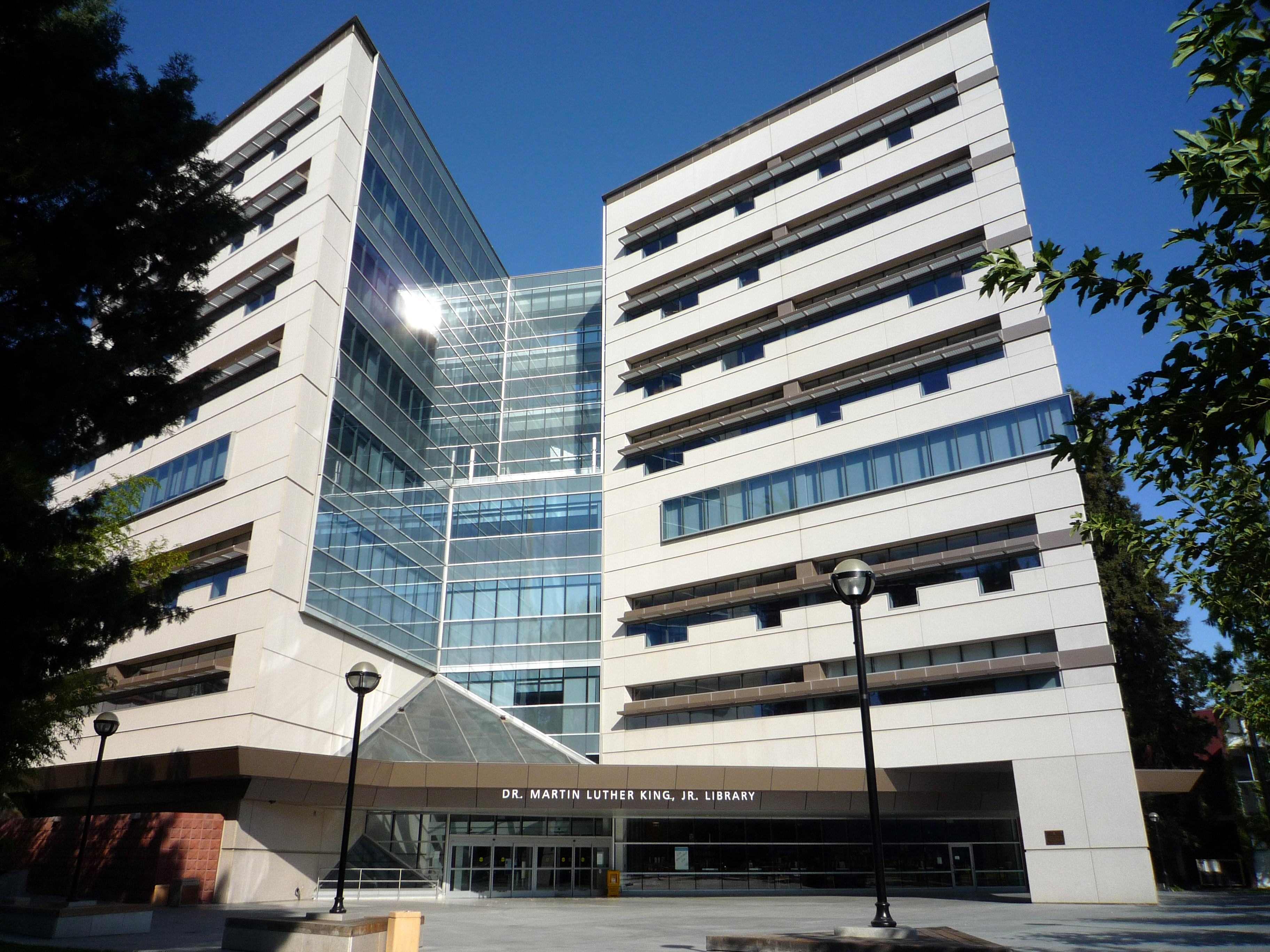 The San José Public Library system is unique in that the Dr. Martin Luther King Jr. Library combines the collections of the city's system with the San Jose State University main library. In 2003, construction of the library, which now holds more than 1.6 million items, was the largest single library construction project west of the Mississippi, with eight floors that result in more than of space with a capacity for 2 million volumes.
The city has 23 neighborhood branches including the ''Biblioteca Latinoamericana'' which specializes in Spanish language works. The East San Jose Carnegie Branch Library, a Carnegie library opened in 1908, is the last Carnegie library in Santa Clara County still operating as a public library and is listed in the National Register of Historic Places. As the result of a bond measure passed in November 2000, a number of brand new or completely reconstructed branches have been completed and opened. The yet-to-be-named brand new Southeast Branch is also planned, bringing the bond library project to its completion.
The San Jose system (along with the university system) were jointly named as "Library of the Year" by the Library Journal in 2004.
The San José Public Library system is unique in that the Dr. Martin Luther King Jr. Library combines the collections of the city's system with the San Jose State University main library. In 2003, construction of the library, which now holds more than 1.6 million items, was the largest single library construction project west of the Mississippi, with eight floors that result in more than of space with a capacity for 2 million volumes.
The city has 23 neighborhood branches including the ''Biblioteca Latinoamericana'' which specializes in Spanish language works. The East San Jose Carnegie Branch Library, a Carnegie library opened in 1908, is the last Carnegie library in Santa Clara County still operating as a public library and is listed in the National Register of Historic Places. As the result of a bond measure passed in November 2000, a number of brand new or completely reconstructed branches have been completed and opened. The yet-to-be-named brand new Southeast Branch is also planned, bringing the bond library project to its completion.
The San Jose system (along with the university system) were jointly named as "Library of the Year" by the Library Journal in 2004.
Community services and utilities
San Jose is protected by the San Jose Police Department and San Jose Fire Department. Drinking water is supplied by the San José Municipal Water System (Muni Water) along with the privately owned San Jose Water Company and Great Oaks Water Company. The San José–Santa Clara Regional Wastewater Facility provides Tertiary treatment, advanced wastewater treatment and reclaimed water.Transportation
Like other American cities built mostly after World War II, San Jose is highly automobile-dependent, with 76 percent of residents driving alone to work and 12 percent carpooling in 2017. The city set an ambitious goal to shift motorized trips to walking, bicycling, and public transit in 2009 with the adoption of its Envision San Jose 2040 General Plan. In 2018, the city extended these goals to 2050 with its San Jose Climate Smart plan.Public transit
Air
 San Jose is served by San Jose International Airport, Norman Y. Mineta San Jose International Airport northwest of downtown, and by Reid-Hillview Airport, Reid-Hillview Airport of Santa Clara County, general aviation airport located in the eastern part of San Jose. San Jose residents also use San Francisco International Airport, a major international hub located to the northwest, and Oakland International Airport, another major international airport located to the north. The airport is also near the intersections of three major freeways, U.S. Route 101 in California, U.S. Route 101, Interstate 880 (California), Interstate 880, and California State Route 87, State Route 87.
San Jose is served by San Jose International Airport, Norman Y. Mineta San Jose International Airport northwest of downtown, and by Reid-Hillview Airport, Reid-Hillview Airport of Santa Clara County, general aviation airport located in the eastern part of San Jose. San Jose residents also use San Francisco International Airport, a major international hub located to the northwest, and Oakland International Airport, another major international airport located to the north. The airport is also near the intersections of three major freeways, U.S. Route 101 in California, U.S. Route 101, Interstate 880 (California), Interstate 880, and California State Route 87, State Route 87.
Highways
The San Jose area is served by a freeway system that includes three Interstate Highway System, Interstate freeways and one United States Numbered Highways, U.S. Route. It is, however, the largest city in the country not served by a List of Interstate Highways, primary (one- or two-digit route number) Interstate; most of the Interstate Highway Network Interstate Highway System#Planning, was planned by the early 1950s well before San Jose's rapid growth decades later. U.S. Route 101 in California, U.S. 101 runs south to the California Central Coast and Los Angeles, and then runs north up near the eastern shore of the San Francisco Peninsula to San Francisco. Interstate 280 (California), I-280 also heads to San Francisco, but goes along just to the west of the cities of the San Francisco Peninsula. Interstate 880 (California), I-880 heads north to Oakland, California, Oakland, running parallel to the southeastern shore of Several state highways also serve San Jose: California State Route 17, SR 17, California State Route 85, SR 85, California State Route 87, SR 87 and California State Route 237, SR 237. Additionally, San Jose is served by a system of county-wide expressways, which includes the
Several state highways also serve San Jose: California State Route 17, SR 17, California State Route 85, SR 85, California State Route 87, SR 87 and California State Route 237, SR 237. Additionally, San Jose is served by a system of county-wide expressways, which includes the Bicycling
Central San Jose has seen a gradual expansion of bike lanes over the past decade, which now comprise a network of car-traffic-separated and buffered bike lanes. San Jose Bike Party is a volunteer-run monthly social cycling event that attracts up to 1,000 participants during summer months to "build community through bicycling". Unfortunately, fewer than one percent of city residents ride bicycles to work as their primary mode of transportation, a statistic unchanged in the past ten years. Typically, between 3 and 5 residents are struck and killed by car drivers while bicycling on San Jose streets each year.Trail network
San Jose is crossed by several major regional off-street paved trails, most notably the Guadalupe River Trail, Los Gatos Creek Trail, and Coyote Creek Trail. These trails extend from near downtown San Jose for dozens of miles to the north and south, and are connected with each other via bicycle routes of varying quality. The city is planning to construct new trail extensions in the coming years including the Three Creeks Trail and San Tomas Aquino Creek Trail.Notable people
Sister cities
San Jose has one of the oldest Twin towns and Sister cities, Sister City programs in the nation. In 1957, when the city established a relationship with Okayama, Japan, it was only the third Sister City relationship in the nation, which had begun the prior year. The Office of Economic Development coordinates the San Jose Sister City Program which is part of Sister Cities International. , there are eight sister cities: * Okayama, Okayama, Okayama, Japan (established on May 26, 1957) * San José, Costa Rica (1961) * Veracruz, Veracruz, Veracruz, Mexico (1975) * Tainan City, Tainan, Taiwan (1977) * Dublin, Ireland (1986) * Yekaterinburg, Russia (1992) * Pune, India (1992) * Guadalajara, Mexico (2014)See also
* List of people from San Jose, California * List of streets in San Jose, California, with name origins * List of tallest buildings in San Jose, California * Northern California MegaregionNotes
References
Further reading
* Beilharz, Edwin A.; and DeMers Jr., Donald O.; ''San Jose: California's First City''; 1980, * ThCalifornia Room
the San Jose Library's collection of research materials on the history of San Jose and Santa Clara Valley.
External links
*Visit San Jose
official tourism website
San Jose Chamber of Commerce
*
Santa Clara County: California's Historic Silicon Valley
National Park Service
Up-to-the-minute view of San Jose from the Mount Hamilton web camera
{{Authority control San Jose, California, 1777 establishments in Alta California 1850 establishments in California Cities in Santa Clara County, California Cities in the San Francisco Bay Area County seats in California Former state capitals in the United States, California Incorporated cities and towns in California Populated places established in 1777 Silicon Valley Populated coastal places in California